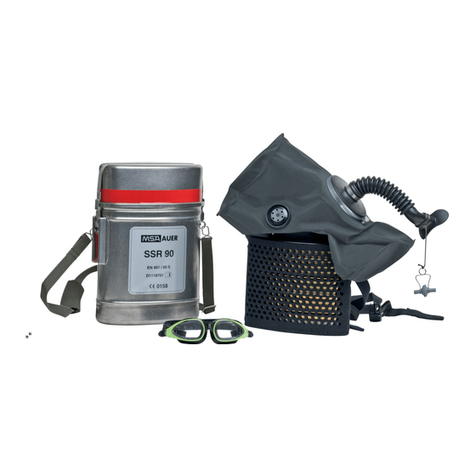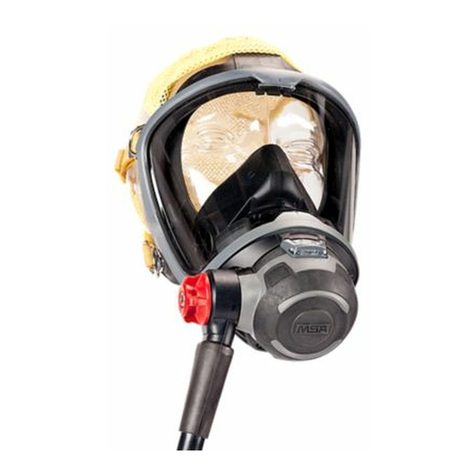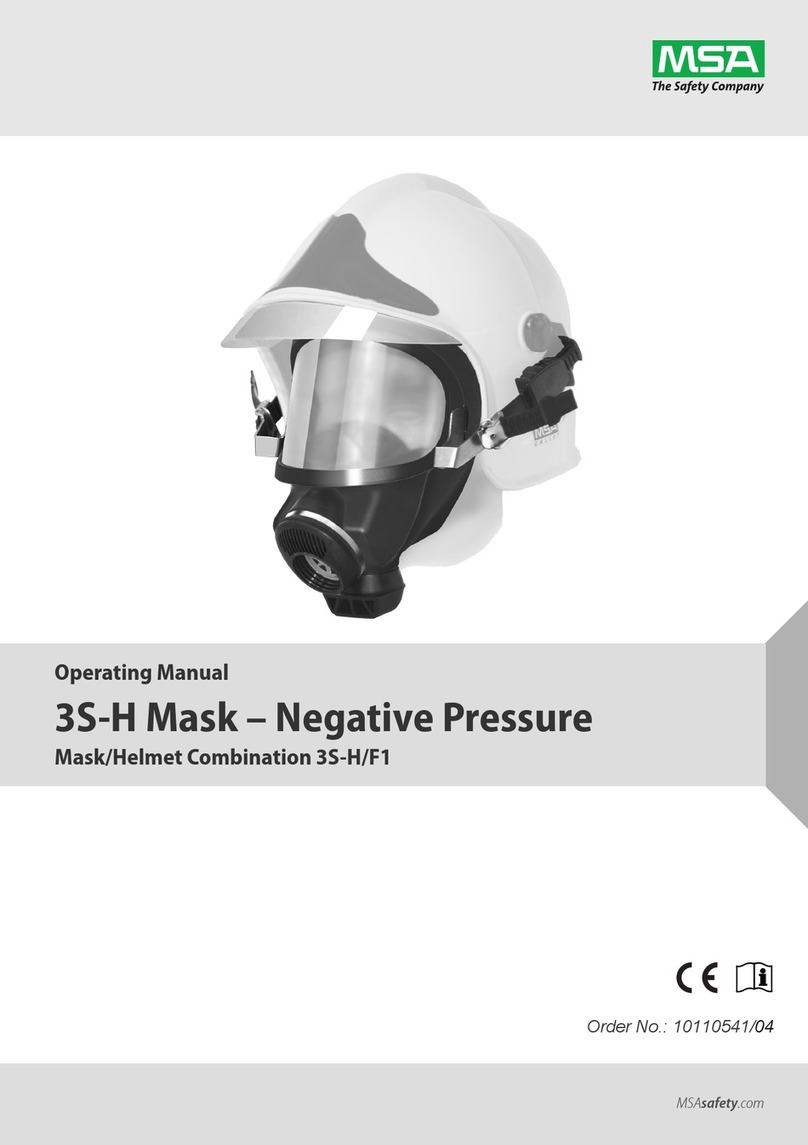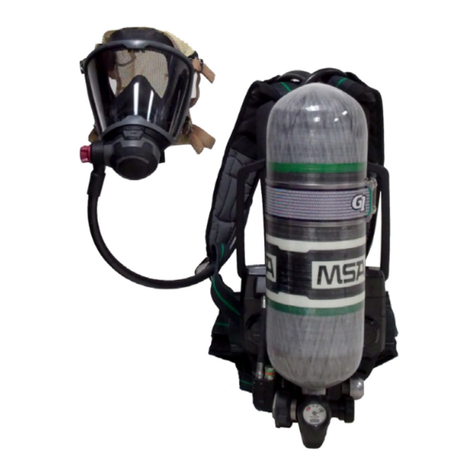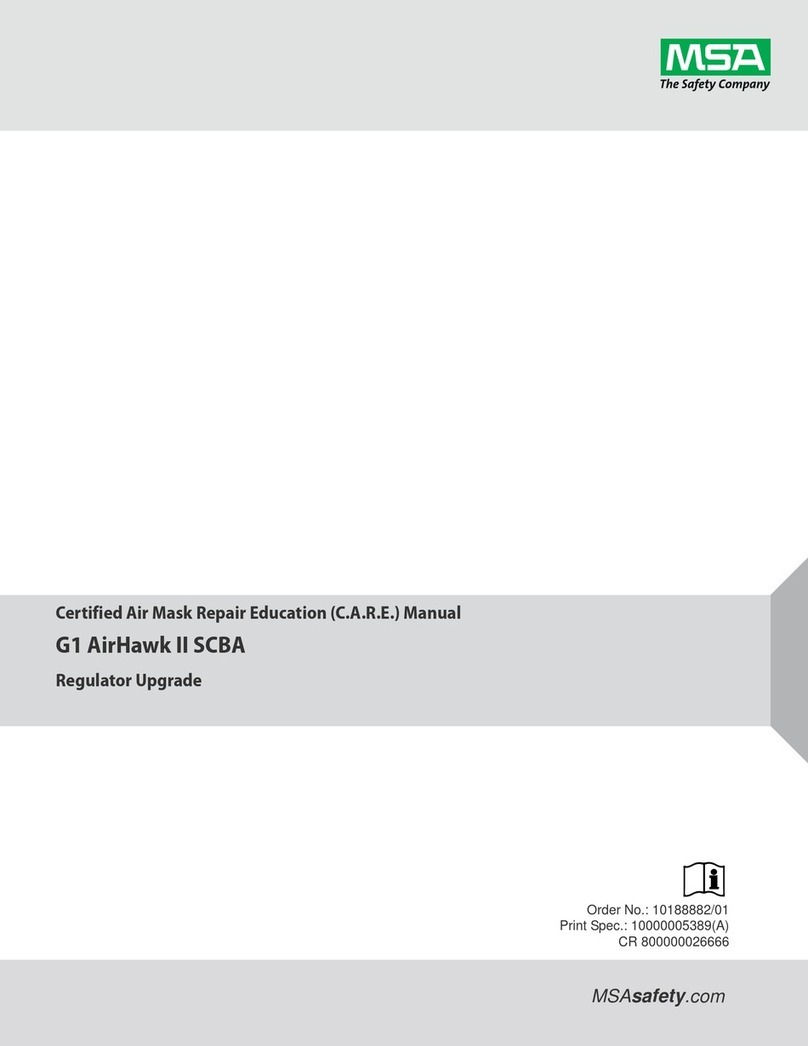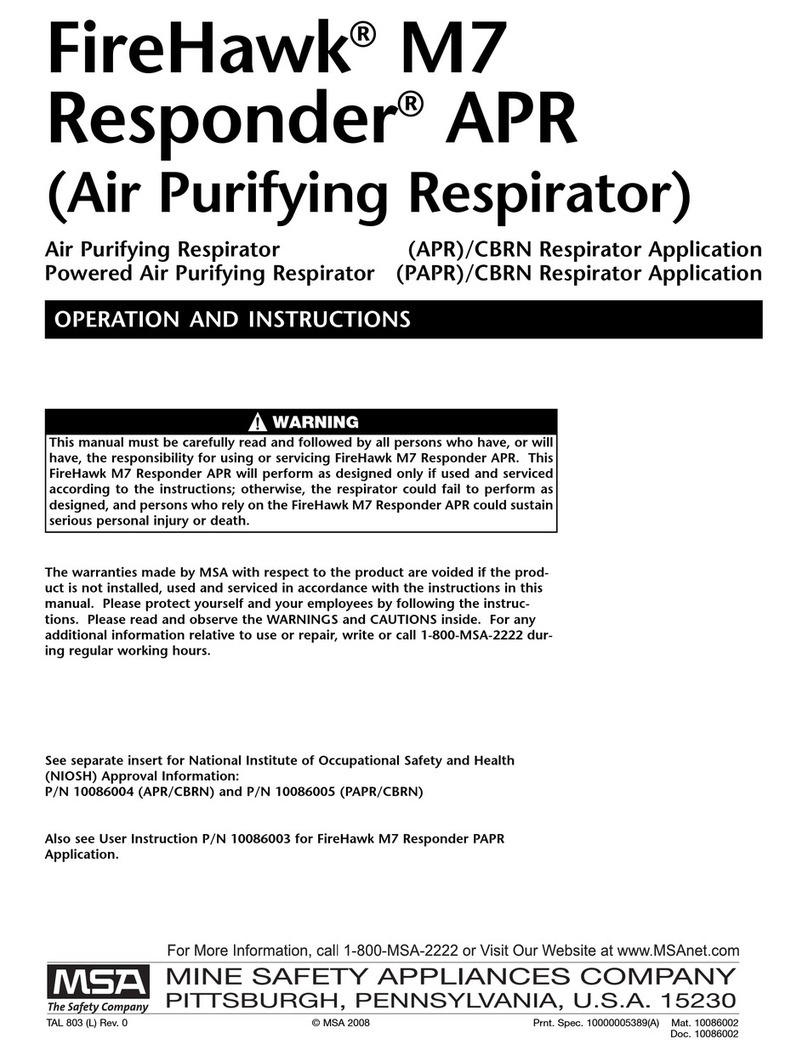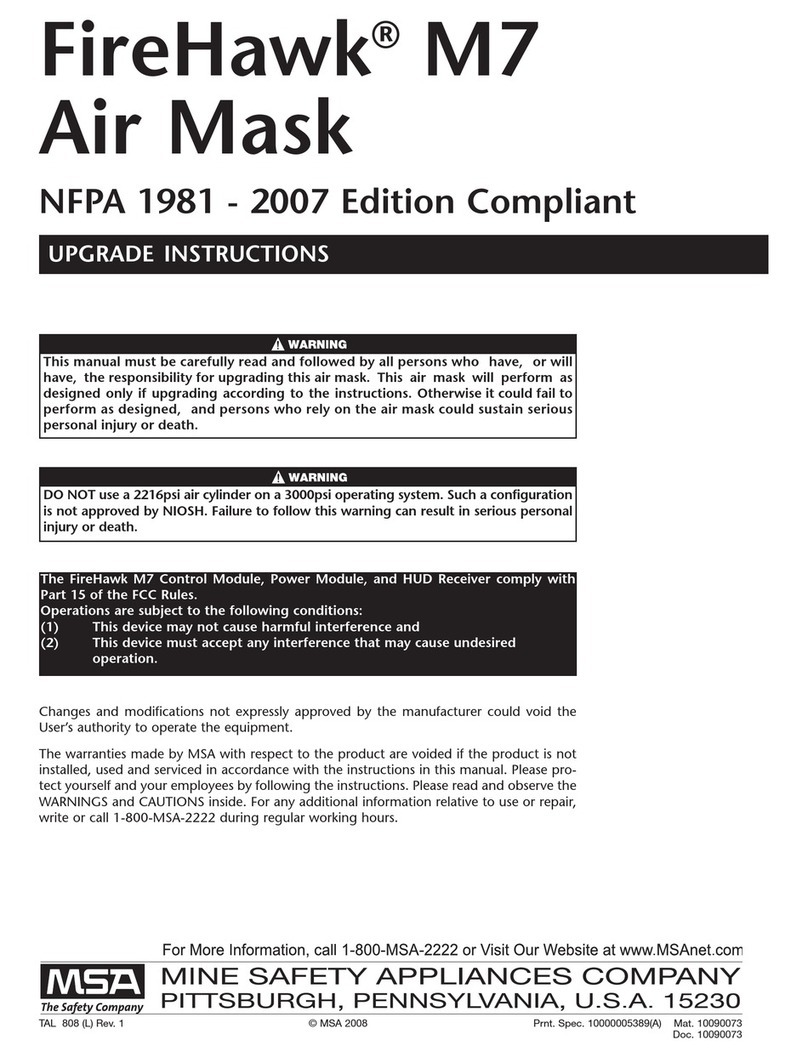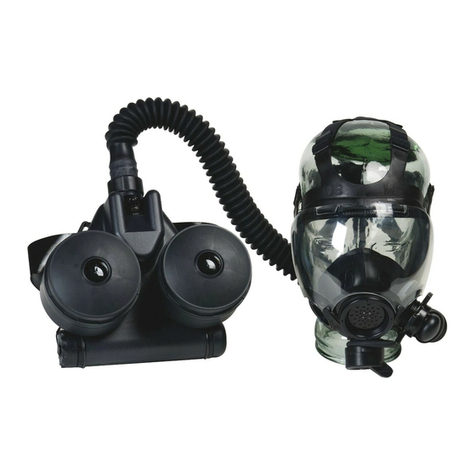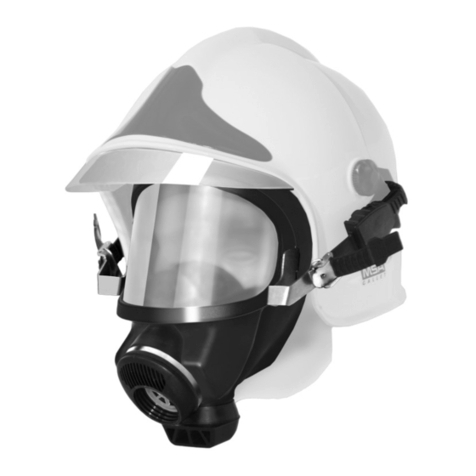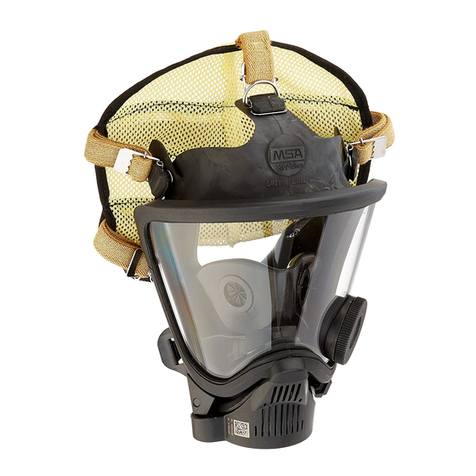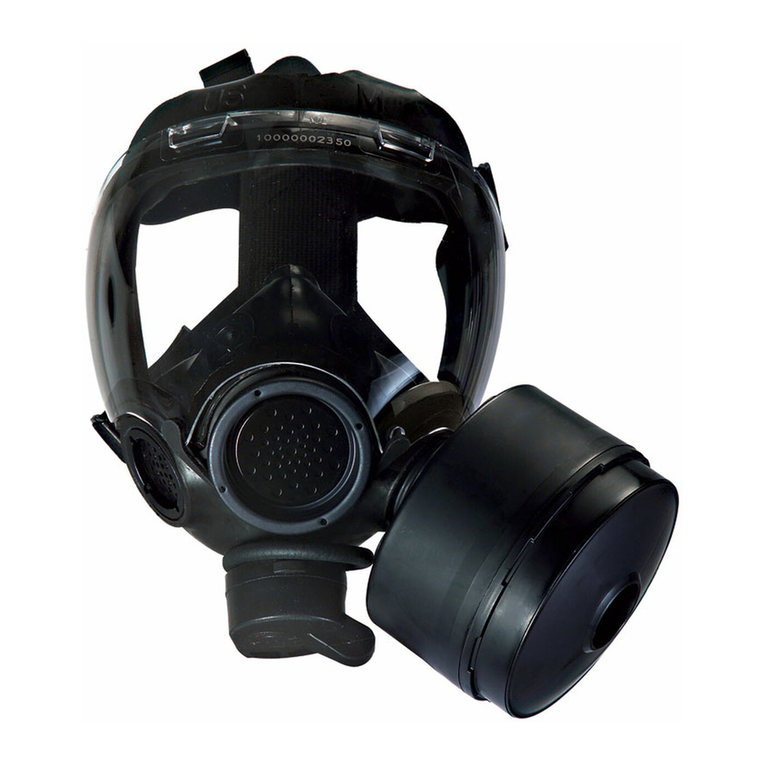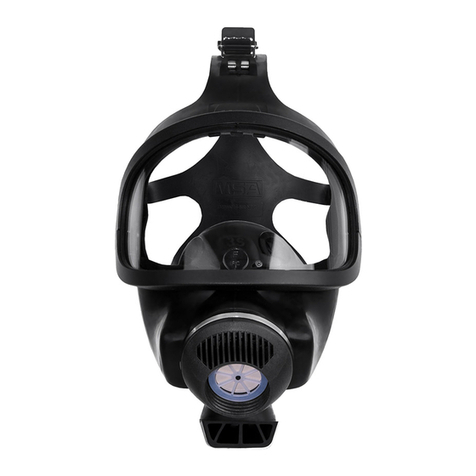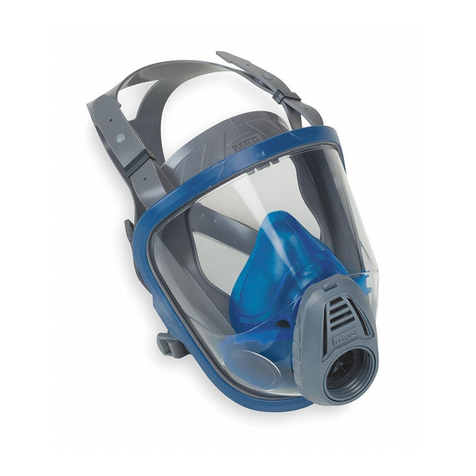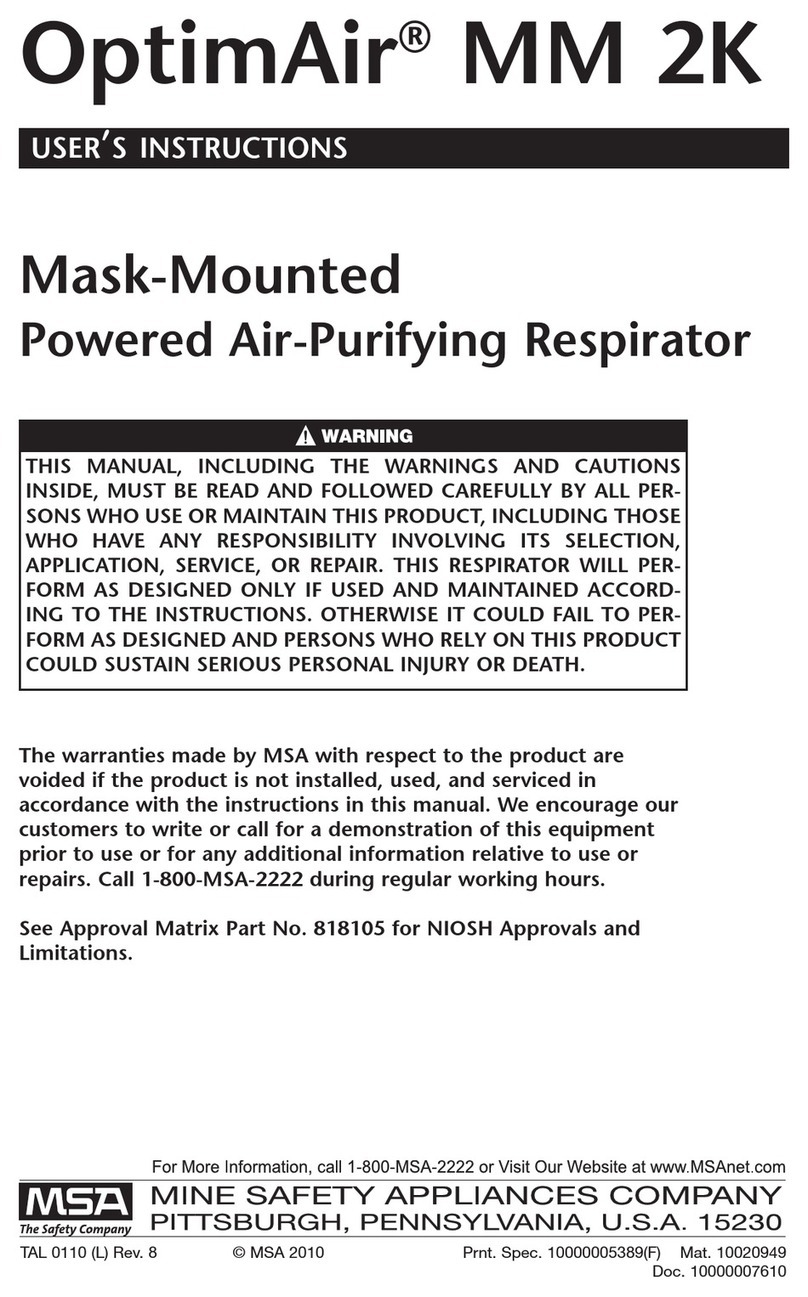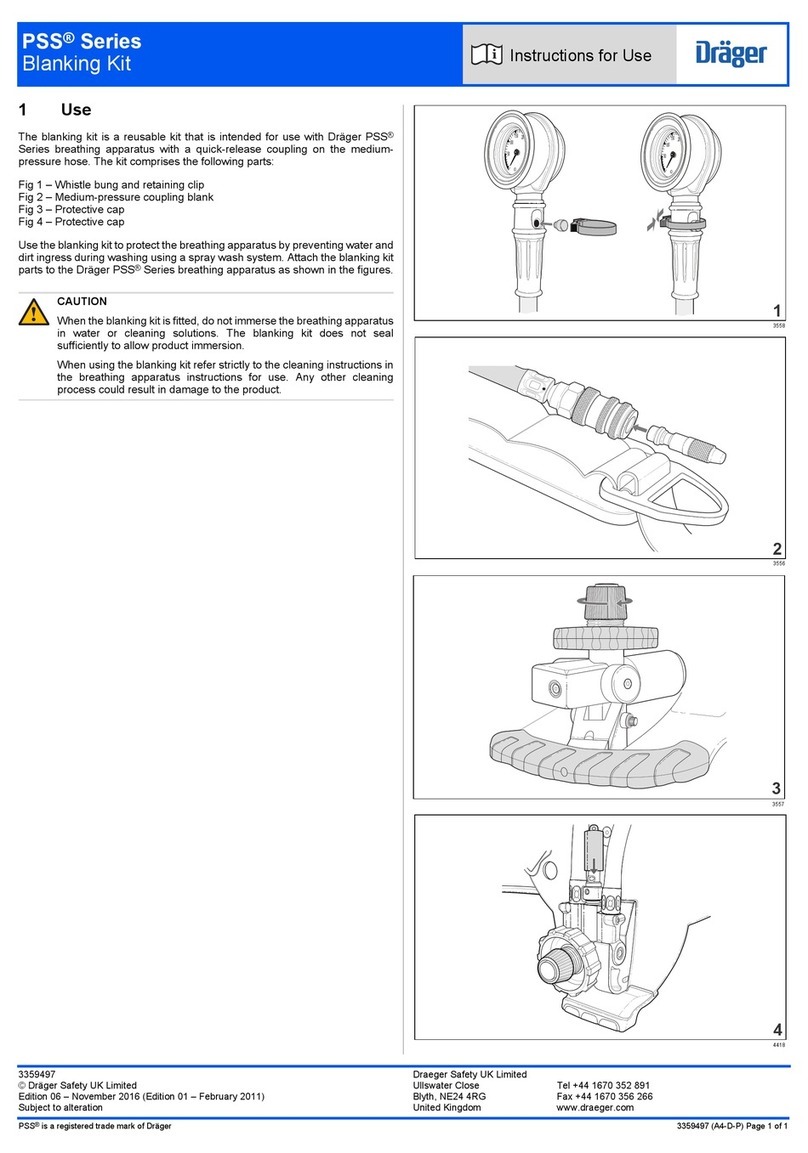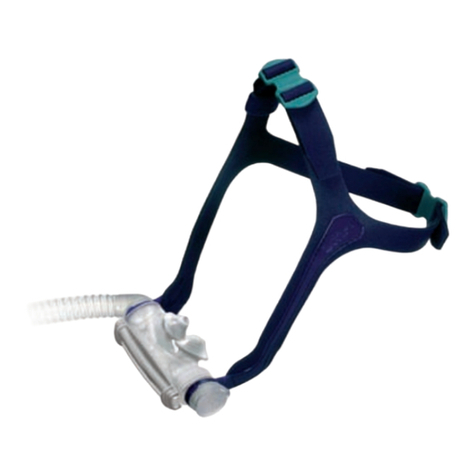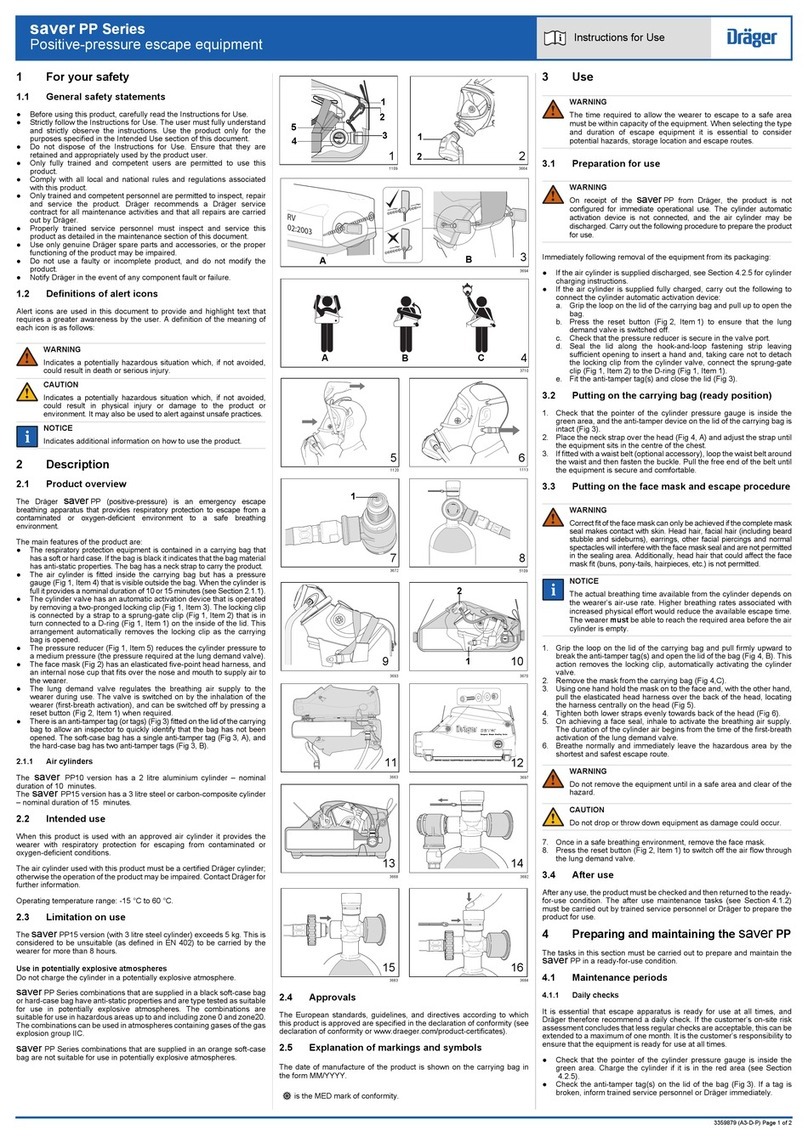
9
Safety Regulations
G1
US
1.5 Intrinsic Safety Approval Information
The MSA G1 SCBA equipped with a mask mounted G1 Regulator with HUD, battery, power, speaker
and control module are intrinsically-safe and conform to UL 913 6th edition, Class I, Division 1,
Groups C and D, Temperature Rating T1.
Do not alter this SCBA. Altering will void the Intrinsic Safety rating and may affect the Intrinsic Safety
of the device. Misuse or abuse of the heads-up display (HUD), control module, power module or
speaker module or using this equipment in a manner or situation not intended by the manufacturer,
may result in damage to the HUD, control, power, or speaker module, may result in personal injury or
death to user or persons dependent on the user. Always inspect the HUD, control, power, or speaker
module for damage before use. If damage is found, immediately remove the device from service. Use
only batteries specified within this manual to stay compliant with the instrinsic safety approval.
1.6 Industry Canada statement
Thisdevicecomplieswith RSS-210oftheIndustry CanadaRules.Operation issubjecttothe following
two conditions: (1) This device may not cause harmful interference, and (2) this device must accept
any interference received, including interference that may cause undesired operation.
Ce dispositif est conforme à la norme CNR-210 d'Industrie Canada applicable aux appareils radio
exempts de licence. Son fonctionnement est sujet aux deux conditions suivantes: (1) le dispositif ne
doit pas produire de brouillage préjudiciable, et (2) ce dispositif doit accepter tout brouillage reçu, y
compris un brouillage susceptible de provoquer un fonctionnement indésirable.
1.7 Important Notice for Respirator Users and Respiratory Protection Program Administrators
(1) An adequate respiratory protection program mustinclude knowledge of hazards, hazard assess-
ment, selection of proper respiratory protective equipment, instruction and training in the use of
equipment, inspection and maintenance of equipment, and medical surveillance.
[See OSHA regulations, Title 29 CFR, Part 1910.134 (c).]
(2) This SCBA may be used only after proper instruction and training in its use as specified in NFPA-
1500 and OSHA regulations Title 29 CFR, Part 1910.134.
1.8 Reference
Formore informationon theSCBA useandperformancestandards,consult the followingpublications:
-NFPA Standard1500, FireDepartment OccupationalSafetyandHealth Programs (Chapter 5) and
NFPA 1981 Standard, on Open-Circuit SCBA’s for Fire Service. Above publications are available
from the following: National Fire Protection Association, Batterymarch Park, Quincy, MA 22269.
-ANSI Standard Z88.5, Practices for Respiratory Protection for the Fire Service; and, ANSI
Standard Z88.2, Practices for Respiratory Protection. American National Standards Institute,
1430 Broadway, New York, NY 10018.
-OSHA Safety and Health Standards (29 CFR 1910) (see specifically Part 1910. 134), available
fromtheSuperintendentofDocuments,U.S. GovernmentPrintingOffice, Washington,DC 20402.
Compressed Gas Association, Inc., 1725 Jefferson Davis Hwy., Suite 1004, Arlington, VA 22202.



